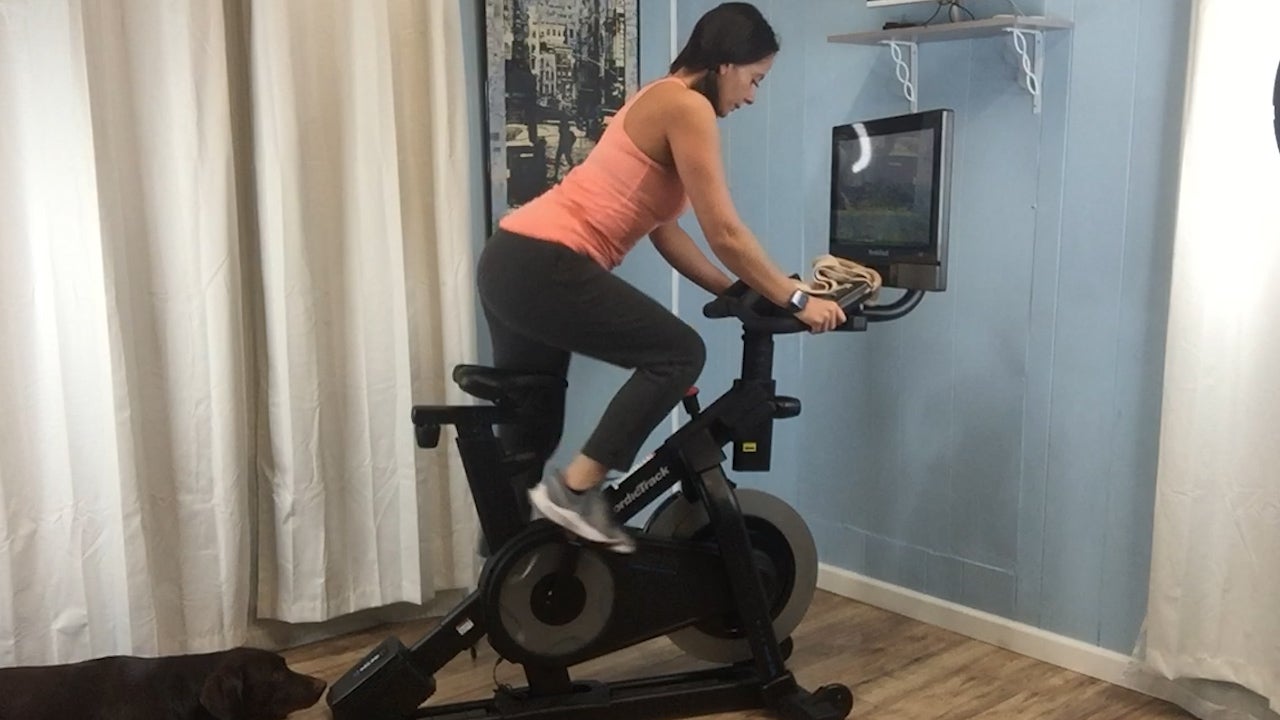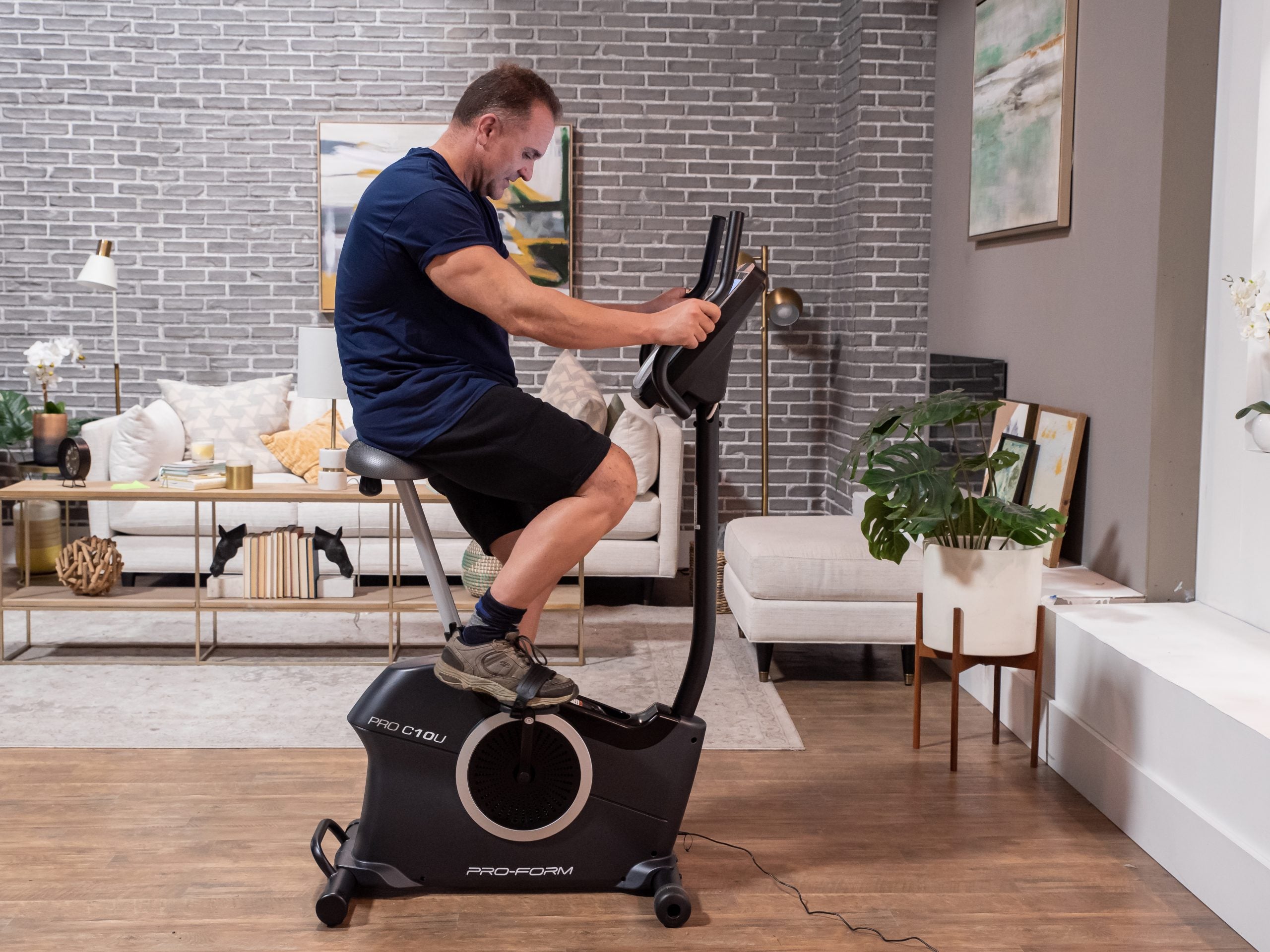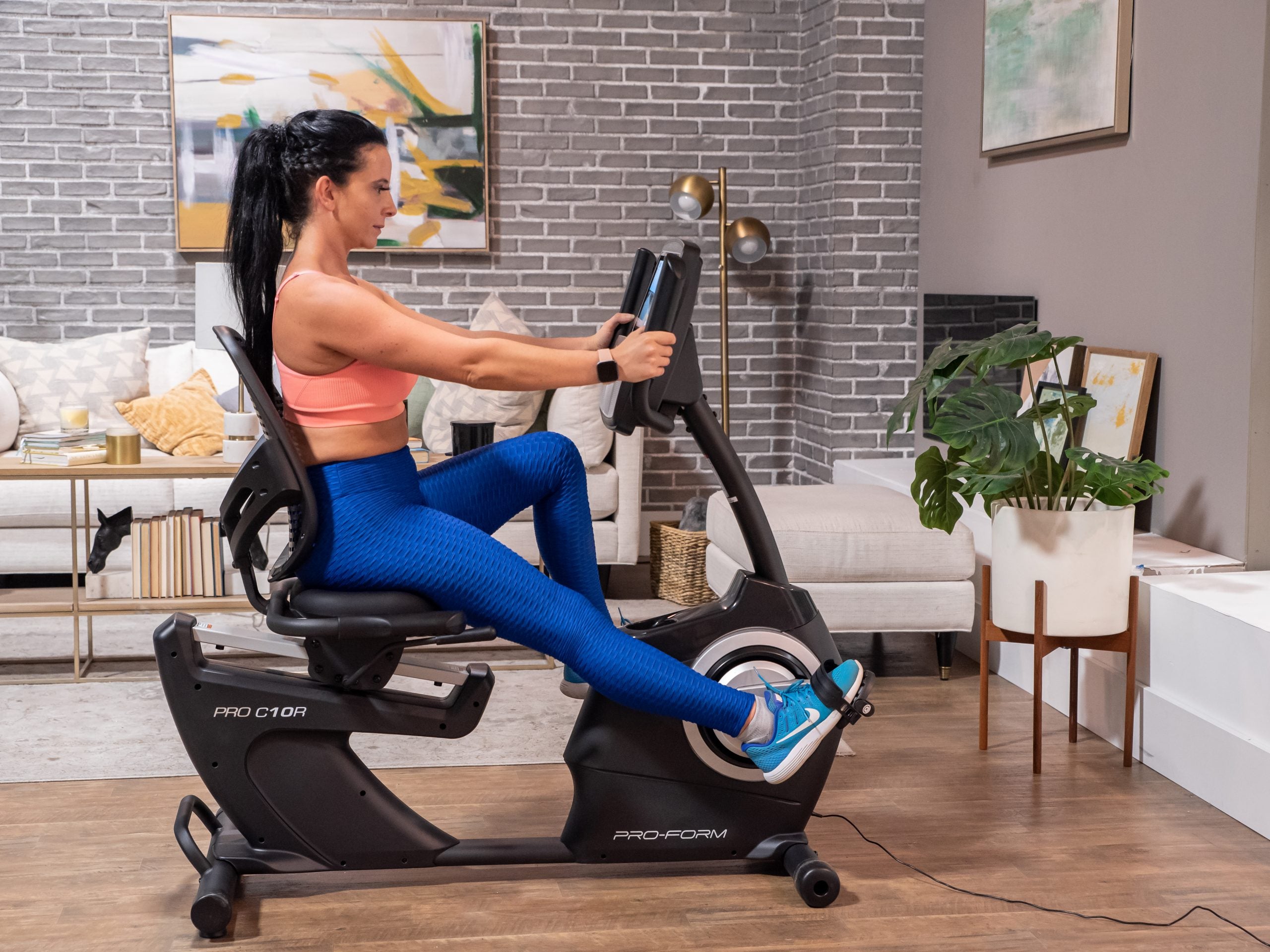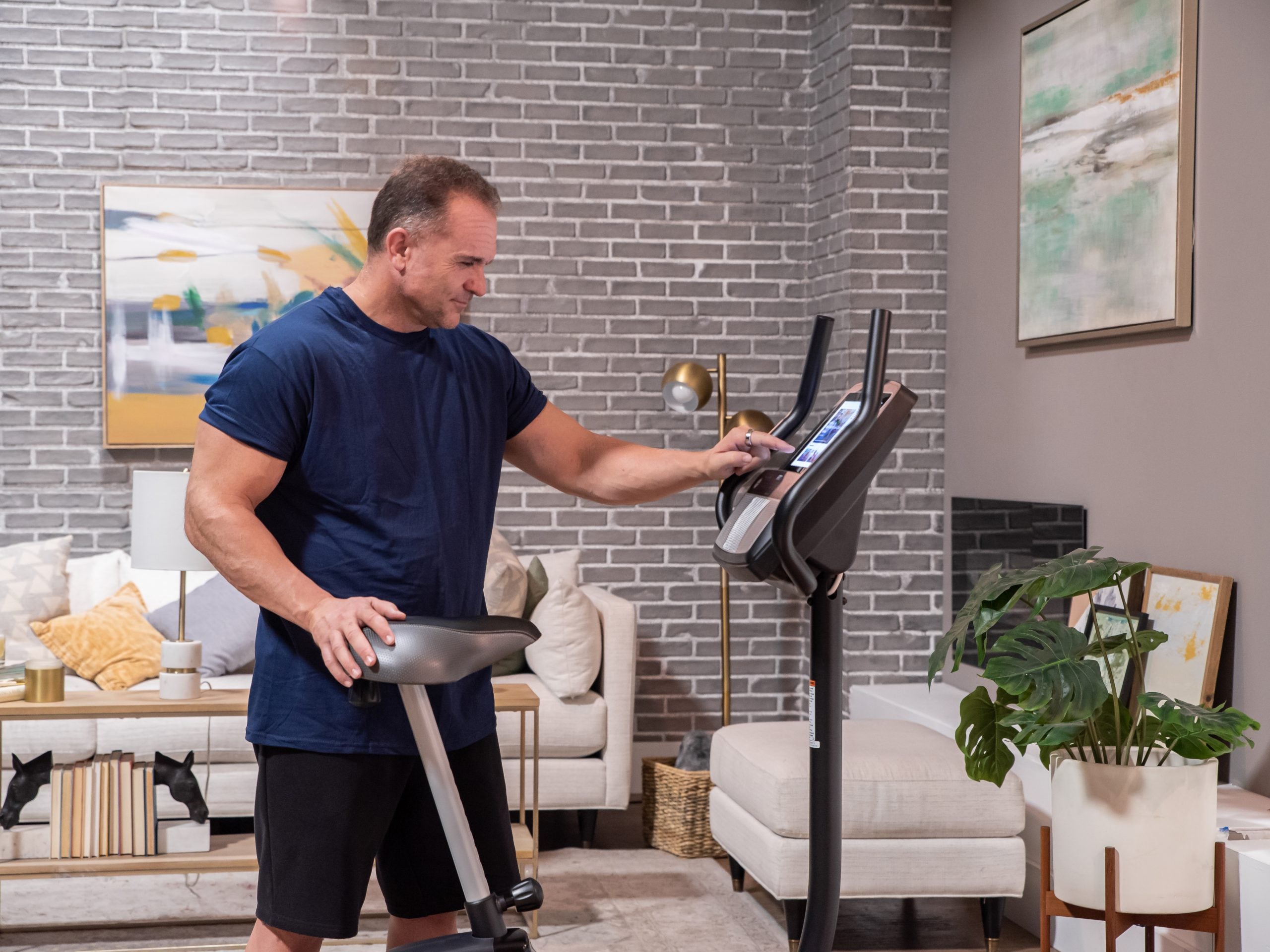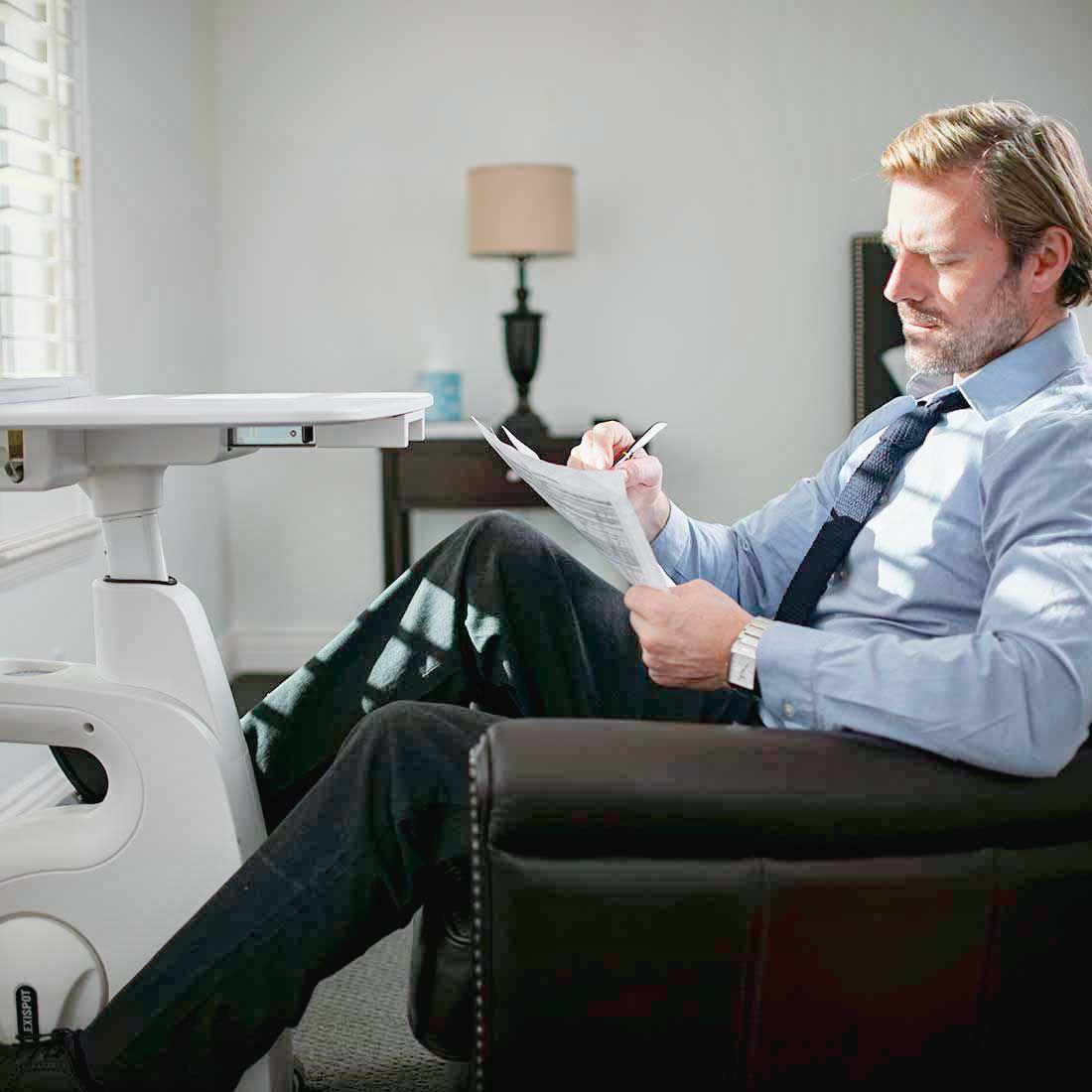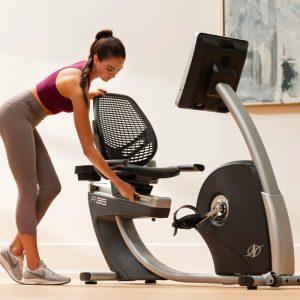Getting some form of physical exercise in every day helps boost your immune system, manage your weight, and keep your body in check. One of the best ways to get your daily cardio in is on an exercise bike. Exercise bikes are becoming increasingly popular, as they’re light, easy-to-use, and can be folded away for easy storage. Plus, you can use them whenever, wherever, no matter what the weather may be outside. And today’s machines are better than ever before. Many models feature customizable fitness programs, built-in heart rate monitors, cooling fans, and so much more. Read on for an in-depth look at the major benefits of exercise bikes.
1.) Weight Loss
If you’re looking to shed some pounds, an exercise bike is a very efficient way to burn calories. Riding a stationary bike for 30 minutes at a time can burn anywhere between 200-300 calories depending on the user’s weight and intensity. An exercise bike can be a highly effective tool for weight loss due to its ability to provide a consistent, low-impact cardiovascular workout. The primary mechanism for weight loss is creating a calorie deficit, where you burn more calories than you consume. Cycling, whether on an upright, recumbent, or spin bike, is an excellent way to increase your daily caloric expenditure.
One of the key advantages of an exercise bike is its accessibility and joint friendliness. Unlike high-impact activities like running, cycling places minimal stress on your knees, ankles, and hips, making it suitable for individuals of varying fitness levels, body weights, or those recovering from injuries. This reduces the risk of pain or injury that might otherwise deter consistent exercise, which is crucial for long-term weight loss success.
Furthermore, exercise bikes allow for varied intensity workouts. You can easily adjust resistance and speed to perform steady-state cardio, which burns a significant number of calories over a longer duration or engage in high-intensity interval training (HIIT). HIIT involves short bursts of intense effort followed by brief recovery periods, which can be highly effective for burning calories in a shorter time and boosting your metabolism post-workout.
Regular cycling also builds muscle, particularly in your legs and glutes. While not as intense as strength training, increased muscle mass contributes to a higher resting metabolism, meaning your body burns more calories even when at rest. This combination of calorie expenditure during exercise and an elevated metabolic rate makes the exercise bike a powerful ally in achieving and maintaining a healthy weight.
2.) Toning
Cyclists are known for having amazing legs. It makes sense: when you’re pedaling away on a bike, your quads, glutes, and calves are hard at work propelling the bike. Bonus: if you’re working that handlebar, you’re giving your upper body a workout, too. An exercise bike is an excellent tool not just for cardiovascular health and weight loss, but also for effectively toning various muscle groups, particularly in your lower body. While it’s not a direct substitute for heavy weightlifting, consistent cycling with appropriate resistance can lead to noticeable improvements in muscle definition and strength.
The primary muscles targeted during cycling are the quadriceps (front of your thighs), hamstrings (back of your thighs), and glutes (buttocks). As you pedal, your quadriceps are heavily engaged during the downstroke, pushing the pedals away, while your hamstrings and glutes work during the upstroke and overall power phase, pulling the pedals back up and around. Increasing the resistance on the bike intensifies the workload on these muscles, forcing them to adapt and grow stronger, which contributes to a more toned appearance.
Beyond the major leg muscles, cycling also engages your calves as you push off and pull up through the pedal stroke. Your core muscles (abdominals and obliques) are also subtly activated to maintain stability and balance, especially during more intense efforts or when standing out of the saddle on a spin bike. While not the primary focus, this consistent engagement helps to strengthen and firm the core.
The repetitive, controlled motion of cycling, combined with adjustable resistance, allows for progressive overload – gradually increasing the challenge over time. This consistent muscular engagement, without the high impact often associated with other exercises, promotes lean muscle development and definition, contributing to a more toned physique. Regular use of an exercise bike can help sculpt strong, defined legs and glutes, enhancing overall body composition.
3.) Muscle Strengthening
Stationary bikes work tirelessly to strengthen the major muscle groups that support the back, leg, thigh, and hamstring muscles. There are two different strokes that are used on an exercise bike: the push and the pull. Pushing down on the pedals is a great way to strengthen the quads, while pulling up is a great way to strengthen the hamstrings. Bonus: exercise bikes cause less stress on the knees than outdoor bikes since you’re riding on even terrain.
An exercise bike is a remarkably effective tool for strengthening various muscle groups, particularly those in your lower body. While it might not build bulk like heavy weightlifting, consistent cycling with appropriate resistance can lead to significant improvements in muscular endurance, power, and definition.
The primary beneficiaries of exercise bike workouts are the quadriceps (the large muscles at the front of your thighs). These muscles are heavily engaged during the powerful downstroke of each pedal revolution, driving the pedal away from your body. As you increase the resistance or tackle an incline on the bike, your quads are forced to work harder, leading to increased strength and toning.
Complementing the quadriceps, the hamstrings (at the back of your thighs) and glutes (your buttock muscles) are also extensively worked. These muscles are crucial for the upstroke, pulling the pedals, and for generating overall power throughout the entire pedal cycle. Engaging the glutes effectively, especially when standing out of the saddle or using higher resistance, contributes to a stronger and more sculpted posterior chain.
Your calves also play a significant role in cycling, particularly as you push off the ball of your foot and pull up through the pedal stroke. This consistent, repetitive motion helps to build endurance and definition in these lower leg muscles.
Beyond the legs, your core muscles (abdominals and obliques) are constantly engaged to stabilize your torso and maintain balance, especially during more intense efforts or when you’re out of the saddle. While not a primary core workout, this sustained isometric contraction contributes to improved core strength and stability over time.
By adjusting the resistance and intensity, an exercise bike allows for progressive overload, a fundamental principle of strength training. This means you can continually challenge your muscles, leading to adaptations that result in increased strength and a more toned physique without the high impact often associated with other forms of exercise.
4.) Ease on the Joints
Running, jogging, and many team sports and classes can be hard on your joints because of the amount of impact involved. An exercise bike is an exceptional way to get your heart rate up without putting excess stress on those precious joints. In fact, a bike puts even less stress on the back, hips, knees and ankles than walking. Proper form on the bike means your knee should bend just slightly on the down pedal stroke. If it’s too bent or too straight, you’ll need to adjust that saddle.
Exercise bikes are renowned for being exceptionally easy on the joints, making them an ideal choice for a wide range of individuals, including beginners, those with pre-existing joint conditions, or individuals recovering from injuries. The primary reason for this joint-friendly nature lies in the non-impact, low-stress motion inherent to cycling.
Unlike activities such as running or jumping, which involve repetitive pounding on hard surfaces, cycling keeps your feet connected to the pedals throughout the entire movement. This eliminates the ground reaction forces that travel up through your ankles, knees, and hips, significantly reducing the shock and strain on these crucial joints. For instance, when you run, each stride can generate impact forces equivalent to two to three times your body weight, which over time can contribute to wear and tear on cartilage and ligaments. An exercise bike bypasses this entirely.
Furthermore, the circular motion of pedaling is smooth and controlled, promoting fluid movement within the joint capsules without sudden jerks or twists. This helps maintain joint lubrication and can even improve range of motion over time. The seated position also removes the need for your body to support your full weight against gravity, further alleviating stress on the lower body joints and spine. This makes it particularly beneficial for individuals with conditions like arthritis, knee pain, or back issues who might find other forms of cardio uncomfortable or even detrimental. The ability to adjust resistance also means you can control the load on your muscles and joints, allowing for a personalized workout that challenges your cardiovascular system and strengthens muscles without overstressing delicate joint structures.
5.) Convenience
The best part about an exercise bike is that you can use it whenever, wherever. If the weather outside is too hot, too cold, or too rainy, who cares? You can keep a recumbent bike in your home office, bedroom, or patio, giving you the chance to work out after dinner, before breakfast, or during a break at work. Plus, when you’re on your machine, you can catch up on your favorite TV shows, read the newspaper or a book, or keep an eye on your little ones.
The convenience of a home exercise bike is a major factor in its popularity and effectiveness for consistent fitness. One of the most significant advantages is accessibility. Having an exercise bike at home eliminates the need to travel to a gym, saving valuable time and removing common barriers to exercise like traffic, parking, or gym crowds. Your workout is literally steps away, ready whenever you are—whether it’s early morning, late at night, or during a quick lunch break.
This immediate availability also translates into time efficiency. Without the commute, packing a gym bag, or waiting for equipment, you can maximize your workout time. Even short, intense sessions become feasible, making it easier to integrate fitness into a busy schedule. Many models are also relatively compact, fitting into smaller living spaces, and some are even foldable or equipped with wheels for easy storage, further enhancing their convenience.
Furthermore, home exercise bikes offer unparalleled privacy and comfort. You can work out in your preferred attire, listen to your own music, watch TV, or even take work calls without feeling self-conscious. This personal environment can be highly motivating for those who find traditional gym settings intimidating.
Finally, home exercise bikes provide complete independence from weather conditions. Rain, snow, extreme heat, or poor air quality become non-issues. This ensures that your fitness routine remains uninterrupted year-round, fostering consistency, which is paramount for achieving long-term health and weight management goals. The convenience factor of a home exercise bike truly makes it a practical and sustainable choice for daily exercise.
6.) Cardio
Cardio exercise works to lower high blood pressure, regulate blood sugar, and prevent heart attacks. Not to mention, it’s a great way to lose weight. Hopping on an exercise bike is an exceptional way to work your body because it will help your heart become more efficient at pumping blood. It also works hard to increase the good cholesterol and lower the bad cholesterol in your body. To put it simply, riding an exercise bike for 30 minutes a day for a handful of times per week can extend your life.
An exercise bike is an exceptionally effective tool for cardiovascular training, offering a host of benefits that contribute to overall heart health and endurance. At its core, cycling is an aerobic exercise, meaning it elevates your heart rate and gets your blood pumping, strengthening your heart, lungs, and circulatory system.
Regular cardio workouts on an exercise bike enhance the efficiency of your heart, allowing it to pump more blood with each beat and reducing your resting heart rate over time. This improved cardiac output leads to better blood flow and oxygen delivery throughout your body, which can significantly lower blood pressure and decrease the risk of cardiovascular diseases like heart attack and stroke.
Exercise bikes also excel in improving lung capacity and VO2 Max, a key indicator of aerobic fitness. The sustained aerobic activity challenges your respiratory system, prompting your lungs to become more efficient at taking in oxygen and transferring it to your bloodstream. Simultaneously, your heart works harder to deliver this oxygenated blood to your working muscles, gradually increasing your body’s maximal oxygen consumption.
The versatility of exercise bikes allows for various cardio workouts, from steady-state sessions that build endurance to high-intensity interval training (HIIT). HIIT, involving short bursts of intense effort followed by recovery, is particularly effective for boosting cardiovascular fitness in less time and can lead to significant improvements in aerobic capacity. This adaptability ensures that whether you’re a beginner or an experienced athlete, an exercise bike can provide a challenging and rewarding cardio workout.
7.) Budgetary Benefits
Investing in a home exercise bike can lead to significant long-term savings compared to maintaining a gym membership or the ongoing costs associated with outdoor cycling. While the initial upfront cost of an exercise bike can range from a few hundred to several thousand dollars, this is typically a one-time expense that pays for itself over time.
Consider the recurring fees of a gym membership. The average monthly gym membership can range from $10 to over $100, depending on the facility’s amenities and location. Beyond the monthly fee, many gyms also charge initiation fees (from $50 to $200 or more), annual maintenance fees ($50 to $150), and sometimes even additional costs for classes or personal training. Over several years, these cumulative costs can easily amount to thousands of dollars, with nothing tangible to show for it once you cancel your membership. A home exercise bike, on the other hand, is an asset you own, which can even be resold if desired.
Compared to outdoor cycling, a home exercise bike also offers financial benefits. While an outdoor bicycle might have a lower initial cost, it comes with ongoing expenses such as maintenance, repairs (e.g., tire punctures, brake adjustments, chain replacements), and gear (helmets, specialized clothing, lights) (Carbon Performance, 2025). These costs can add up, especially for frequent riders or those with high-performance bikes. A home exercise bike generally requires minimal maintenance, primarily consisting of basic cleaning and occasional lubrication, saving you money on tune-ups and replacement parts.
Furthermore, a home exercise bike eliminates indirect costs associated with both gym memberships and outdoor cycling, such as transportation expenses (gas, public transit fares), parking fees, and the time spent commuting. This convenience factor not only saves money but also makes it easier to stick to a fitness routine, maximizing your investment in your health.
8.) Energy-Boosting
According to a study published in the journal Psychotherapy and Psychosomatics, bike riding improved energy levels by 20 percent and decreased fatigue by 65 percent. Why, you ask? It’s simple: cycling triggers your brain to release the neurotransmitter dopamine, which is linked to energy.
An exercise bike is a fantastic tool for boosting both your energy levels and metabolic rate, contributing to a more vibrant and efficient body. When you engage in a cycling workout, you immediately increase your energy expenditure. Your muscles demand more fuel, leading to a direct burning of calories during the activity. This immediate caloric burn is a fundamental way to kickstart your metabolism.
Beyond the immediate effects, regular cycling can lead to long-term metabolic benefits. Consistent cardiovascular exercise, like that provided by an exercise bike, helps to build and maintain lean muscle mass, particularly in your legs and glutes. Muscle tissue is more metabolically active than fat tissue, meaning it burns more calories even at rest. Therefore, increasing your muscle mass through cycling can lead to a higher basal metabolic rate (BMR), allowing your body to burn more calories throughout the entire day, even when you’re not exercising.
Furthermore, intense cycling sessions, especially those incorporating High-Intensity Interval Training (HIIT), can create an “afterburn effect” known as Excess Post-exercise Oxygen Consumption (EPOC). During EPOC, your body continues to burn calories at an elevated rate for hours after your workout as it recovers and returns to its resting state. Studies have shown that vigorous cycling can significantly elevate post-exercise energy expenditure, persisting for several hours.
Finally, exercise, including cycling, stimulates the release of endorphins, often referred to as “feel-good” chemicals. While their primary role is pain suppression, these neurotransmitters contribute to feelings of euphoria and can provide a natural boost in energy and mood, making you feel more invigorated throughout your day.
9.) Allows for Interval Training
Interval training is a proven effective method to torch more calories, increase efficiency, and improve overall aerobic performance. When using an exercise bike, you eliminate a lot of the hurdles on the road like uneven terrain that can limit peak intensities and stoplights that break the flow.
An exercise bike is an exceptional tool for implementing interval training, a highly effective workout strategy that alternates between periods of high-intensity effort and periods of lower-intensity recovery. This method is particularly potent for boosting cardiovascular fitness, burning calories, and improving overall performance in a time-efficient manner.
The design of an exercise bike makes it uniquely suited for interval training due to the ease with which you can adjust resistance and speed. Unlike outdoor activities where terrain and external factors dictate intensity, an exercise bike provides precise control. With a simple turn of a knob or press of a button, you can instantly shift from a light warm-up to a challenging sprint or a steep hill climb, and then back down to a recovery pace. This seamless transition allows for structured and repeatable intervals, which are crucial for maximizing the benefits of this training method.
Interval training on an exercise bike can take many forms, from short, all-out sprints followed by complete rest (High-Intensity Interval Training or HIIT) to longer, sustained efforts at a high intensity interspersed with active recovery. This variability not only keeps workouts engaging and prevents boredom but also challenges your cardiovascular system in different ways, leading to significant adaptations. Your heart becomes more efficient at pumping blood, your lungs improve their oxygen uptake, and your muscles become better at utilizing energy, all contributing to enhanced endurance and power. The ability to precisely control the workload makes the exercise bike an ideal platform for customizing interval workouts to match your current fitness level and progressively increase the challenge as you get fitter.
10.) Safer Than Road Biking
With road biking come inherent dangers. From T-junctions and roundabouts to parked vehicles, potholes, impaired drivers, and so much more, defensive riding is critical. However, an exercise bike keeps you safe in the comfort of your home without all the added hazards.
Now that you’re familiar with the benefits of exercise machines, it’s time to find one that works for you and your lifestyle. To ensure you’re choosing the best bike for you, ask yourself the following questions:
- Do you want an upright bike, an indoor cycle or a recumbent bike (this type of bike allows you to pedal from a more reclined position)?
- Do you need something smaller that folds up, or do you have room for something with all the bells and whistles?
- What do you want to spend?
- How often are you planning on using it?
- What will you use the bike for? What is your primary goal?
To make your workout work for you, it’s important to go to the next level. We suggest finding a friend to exercise with – this will hold you accountable for your workouts and ensure you stick with a routine. We also recommend setting your intention before you get on that bike. Whether it’s strength one day, or recovery the next, it’s great to know what you’re working for. Lastly, it’s important to change it up every once in a while. With so many fun and innovative videos on the market, you can cycle through the city one day and France the next with a click of a button.
